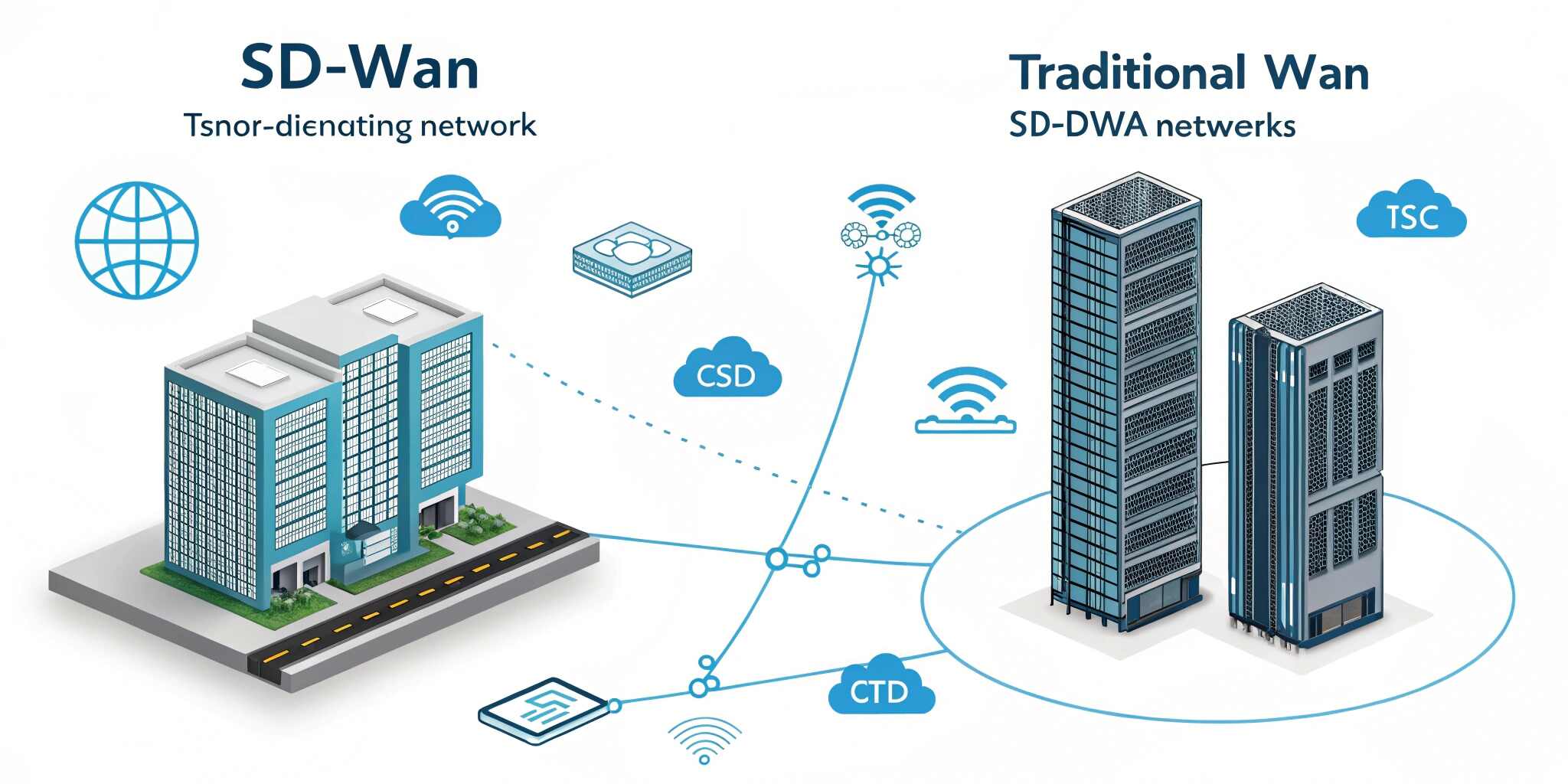In an era where digital transformation drives every business decision, connectivity has become a vital asset. Organizations with multiple branches and cloud-based operations rely heavily on their network performance to stay productive and secure. Traditionally, Wide Area Networks (WANs) connected different locations using private MPLS (Multiprotocol Label Switching) lines, ensuring stable and controlled communication. However, as cloud adoption and remote work surged, traditional WAN models began to show limitations. Enter Software-Defined Wide Area Networking (SD-WAN) — a revolutionary solution designed to meet the demands of modern enterprises.
The Evolution from Traditional WAN to SD-WAN
For years, Traditional WAN architectures have been the backbone of enterprise networking. They route traffic from branch offices through centralized data centers before reaching the internet or cloud services. This model ensured control and security but often resulted in high latency and bandwidth costs.
As businesses adopted cloud computing, SaaS applications, and remote collaboration tools, routing all traffic through a central hub became inefficient. Employees accessing cloud-based services like Microsoft 365, Zoom, or Salesforce faced performance bottlenecks. The rigid structure of Traditional WAN couldn’t keep up with the agility and scalability needed for today’s digital enterprises.
This growing demand for flexibility, visibility, and cost optimization gave rise to SD-WAN — a software-defined approach that redefines how data moves across the enterprise network.
What Is SD-WAN and Why It Matters
SD-WAN leverages software-defined networking (SDN) principles to intelligently manage and optimize traffic across multiple connections—such as broadband, LTE, and MPLS—based on real-time network conditions. Unlike traditional WAN, it enables direct-to-cloud connectivity, improving performance and reliability while lowering costs.
Key benefits of SD-WAN include:
- Enhanced Performance: SD-WAN dynamically routes traffic through the most efficient path, ensuring applications run smoothly.
- Increased Agility: It allows IT teams to configure and deploy network changes centrally, without manual intervention at each site.
- Cost Efficiency: By using affordable internet links in place of expensive MPLS circuits, businesses reduce networking costs significantly.
- Improved Security: Integrated encryption, firewalls, and secure tunneling protect data across distributed environments.
- Cloud Optimization: SD-WAN offers direct access to cloud platforms, reducing latency and improving user experience.
Challenges of Traditional WAN in Modern Enterprises
Traditional WANs were built for a time when most applications were hosted in on-premises data centers. As organizations expanded globally and embraced cloud-first strategies, several challenges emerged:
- High Operational Costs: Maintaining MPLS networks across multiple branches is costly and difficult to scale.
- Limited Flexibility: Network configurations require manual updates, which slow down deployment and troubleshooting.
- Performance Bottlenecks: Centralized traffic routing leads to latency issues for cloud-based applications.
- Lack of Visibility: Traditional WANs offer minimal insights into application performance or traffic patterns.
- Scalability Issues: Adding new branches or remote users often requires hardware installations and long setup times.
These pain points have driven enterprises to seek a more adaptable, cloud-compatible networking model—making SD-WAN a strategic upgrade.
How SD-WAN Empowers Modern Enterprises
With SD-WAN, businesses can seamlessly integrate cloud services, manage remote workforces, and ensure secure connectivity across distributed locations. It simplifies network management through centralized control panels, allowing IT teams to monitor and adjust traffic flows with ease.
For example, an enterprise with offices across continents can ensure that mission-critical applications like ERP systems or video conferencing tools receive bandwidth priority. Additionally, SD-WAN provides end-to-end encryption, protecting data from threats while ensuring compliance with industry standards.
Another major advantage is scalability. Adding new branches no longer requires complex MPLS configurations; SD-WAN allows businesses to connect new sites using simple internet links and cloud-based provisioning—reducing time and cost.
Moreover, SD-WAN’s built-in AI and analytics capabilities help predict and prevent network failures, offering real-time insights for performance optimization.
Making the Right Choice
The decision between SD-WAN and Traditional WAN ultimately depends on an organization’s needs. For businesses prioritizing cloud adoption, agility, and cost efficiency, SD-WAN is a forward-thinking choice. Traditional WAN may still serve industries requiring strict data control or limited cloud exposure, but the shift toward software-defined infrastructure is inevitable.
By 2025, analysts predict that over 70% of enterprises will adopt SD-WAN to enhance operational efficiency and reduce networking complexity.
Conclusion
In today’s digital-first economy, a reliable and agile network is the foundation of business success. SD-WAN stands out as a transformative solution that aligns with the speed and flexibility required by modern enterprises. It addresses the limitations of Traditional WAN by offering better control, security, and cost management—all while supporting cloud and remote work environments.
Organizations looking to future-proof their IT infrastructure should embrace SD-WAN not just as a network upgrade, but as a critical enabler of digital transformation.


